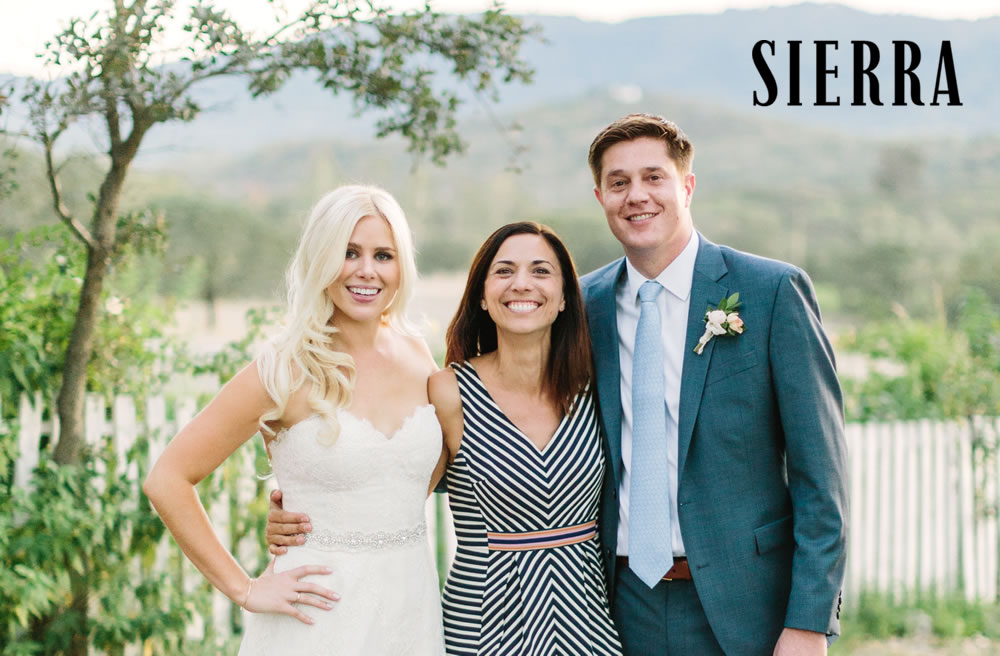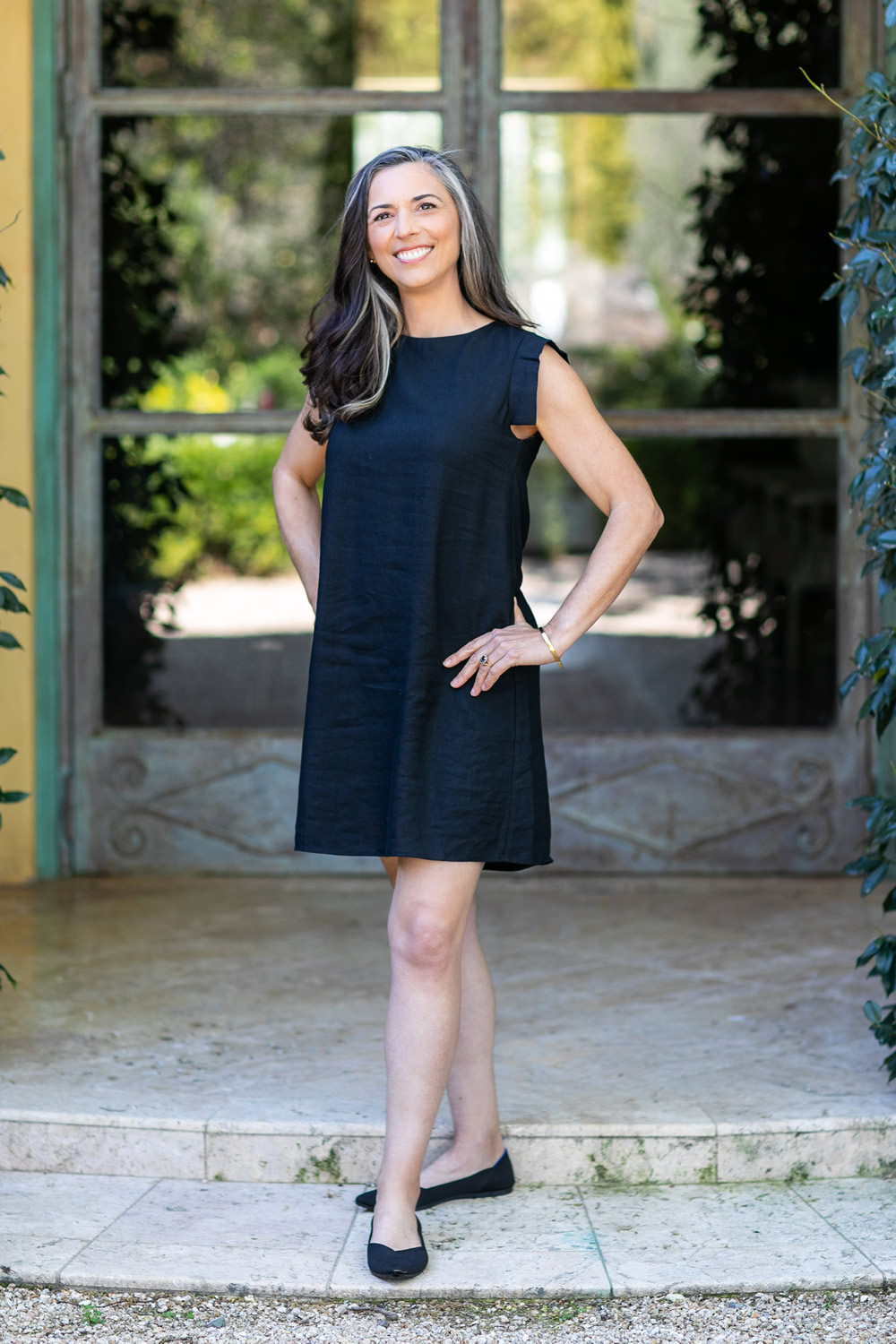Blog
In the Press: Sierra Club Magazine Names Corina Beczner a Trendsetter

It was such an honor to be recognized by Sierra Club in their Sierra Magazine as a Trendsetter. It was a really fun interview wich I can share with you here:
A class in the geography of garbage changed Corina Beczner’s life. With her outgoing personality and passion for waste reduction, greening often-extravagant events was a perfect match. Beczner founded her wedding-planning firm, Vibrant Events, last June after graduating with an MBA in sustainability from San Francisco’s Presidio School of Management.
Q: How can being green make a wedding more memorable?
A: Sustainability is all about being innovative, and the most meaningful weddings are the ones that don’t do all that cookie-cutter stuff. One bride didn’t want any cut flowers, so her friends made paper flowers that could be recycled. It was festive and represented the couple well because they were both artists.
Q: Does being ecofriendly ever run afoul of wedding etiquette?
A: One couple used an Evite invitation; the family didn’t like that. But another sent one piece of paper in an envelope to meet traditional expectations and created a supplemental Web site.
Q: Why is it important to make weddings environmentally friendly?
A: This is a $139 billion-a-year industry. I want to help couples use some of that money to express what they care about–whether it’s local food, carbon emissions, or recycling.
How did you get into planning green weddings?
I got my undergraduate degree in geography and worked with city and county governments on waste reduction and recycling education, but I always had a personal passion for design and consumer products. There’s a ton of power there in the potential to make better choices. Then I got involved in the green-building movement, and started working with Betsy Rosenberg on the EcoTalk radio show (originally Trash Talk). I was covering the environmental beat and I found that I love finding out what’s cool and sharing that, inspiring people through that. I went on to help start GreenBiz.com with Joel Makower and saw that field blossom. That’s what led me to get an MBA.
I had been following and supporting the visions of others, and I started thinking about what I was good at, what I wanted to do. I love managing projects, I love having fun, I love networking, and people always said, “You would be a good event planner; you should really get into that.” I had been organizing large-scale events while volunteering for different nonprofits, and also helping friends with their weddings–I was going through that time where all of my friends were getting married–so when I started my MBA, I started looking into green weddings. At Presidio, you end your program by bringing all your coursework into one major project. And that became Vibrant Events. Since starting out last June, I’ve done three weddings and one other major event.
What part of a wedding is most challenging to make green?
Finding a client who wants to do the whole thing green! There’s lots of shades of green, but it’s hard to find a client that’s willing to spend the money to green the dress, the flowers, the décor, their whole gift registry, their jewelry… It starts before they’re engaged: Is the guy involved, does he get that there’s a green choice for the engagement ring? Three years ago, there weren’t these options. Planners can now come on the scene because there are these awesome companies offering something with environmental value while still meeting the style and tradition common to weddings.
The other thing I really care about is the deeper meaning, the ritual behind these landmark occasions. That’s why I chose to focus on weddings–there’s a special spirit in every wedding. Bringing in sustainability can be part of that spirit–the spirit of connection, of forming a union, of bringing your family and friends, your community, together in a way that makes sure there’s a healthy planet for generations to come.
When I sit down with a client, I’m assuming they already “get” the green thing. So I want to know who they are, what they care about, and how we can weave that into the story of their wedding, the ritual that we’re going to create. There are so many expectations that families have, it can be hard for couples to be clear about those things. It really does help to have a third party to act as a barrier. My job is to take the stress off the couple and help them plan an event that represents them to their family and friends. It’s up to them to create the rest of their lives.
How does being green affect an event that’s so personal, etiquette-bound, and emotional?
Weddings are all about more. You go to these bridal fairs, and there’s all these plastic tchotchkes with your names on them, these big dresses, these huge flower arrangements… like the more you bring into your wedding, the better you’re going to look. That’s the cookie-cutter experience we’re brought up expecting. I’m here to show people that less is better. It’s a healthier experience for people, the planet, and future generations.
People don’t understand that events are really impactful. They last just a short period of time and people don’t see all the waste, because they’re not behind the scenes. People flying from around the world to witness you, an average of 173 people at a wedding to feed… Americans spend $80 million a year just for wedding ceremonies and receptions; that doesn’t include the other parties, the honeymoons. Just the average venue is between $6,000 and $12,000 for that one day. So let’s consider using some of that money as a way to add meaning. Let’s take that money and get married on a farm. Let’s look at community centers and put that money back into the community.
I like the term “sustainable” better than “green”–it’s not just about the environment, but social responsibility as well. I advocate that weddings should be on the 100-mile diet–not just the food, but the gifts, everything put back into the local community.
What do you suggest that couples look for in their rings?
There’s enough gold [in circulation] to be recycled to meet our jewelry needs for the next 50 years. One couple I worked with brought in the green aspect and a family connection by asking both sides of the family to give gold jewelry they weren’t wearing anymore; they had it melted down and had two rings made.
How about the décor?
Magazines will tell you that you have to pick the flowers that represent “you,” but they don’t tell you they’re flying thousands of miles and grown with pesticides that are often banned in the United States. We don’t hear about those disgusting statistics as part of this amazing ritual. The bride at one wedding [I worked on] didn’t pick what she wanted; she just used local flowers from local farmers, whatever was in season at that time.
Working with décor doesn’t have to be just flowers either–it can be branches, or grains, or ornaments. Creative reuse is such an important part. If you’re doing it yourself, it’s easy to fall back on roses, or pre-made bunches from Costco. But you can go to farmers’ markets and talk to flower growers about what they could bring. But there has to be a giving up of this convention that you have to have things one particular way.
The food?
Most of the weddings I’m doing now have all organic food. The best chefs in the world will choose organic and seasonal, because it tastes better, so you’re going to get a higher quality product. The best wines are most likely organic too, although maybe not certified.
The dress?
It can be hard to find a bride that will actually buy a used wedding gown. But you can have one made by dressmakers using organic hemp silk, or get your dress from a local gownmaker. Another thing you can do is buy a dress that you can reuse. If you just like the top, you can even have it cut in half afterward and re-wear the top.
The favors?
Avoid plastic, and get something that guests can actually use. One idea I really like is little bottles of oil and vinegar or some other food item in a nice glass container. You can do it in small quantities at a high level of quality. Another is bookmarks made from flower-seed-embedded paper–guests can plant them when they’re done using them.
One of the best favors I’ve seen was from a couple who ordered bulk reusable bags with a modern, graphic design they created to reflect the theme of their weekend wedding. It had just the place and the date on it, not their names. It was a huge hit; everyone’s still using them as a beach bag or grocery bag. The couple wanted their family and friends to experience being green beyond the wedding.
The gift registry?
There aren’t really any green wedding registries yet, so I sometimes help the couple set up a Web site with links to green places for gifts. But there are great organizations like the I Do Foundation that give 10 percent of everything people buy for you [at regular stores] to a charity of your choice. Or you could create a gift registry through a fair-trade store like World of Good.
What are the latest trends in green weddings?
The whole wedding ring thing was not a conversation three years ago. It feels good to start off [a green wedding] with a green ring. The wedding dress is starting to get better. It’s bigger in England right now, but we’re going to see a ton start to happen with green dresses–bamboo, silk, and hemp are all getting a lot better.
Organic wedding cakes are starting to pick up as well. The wedding cake is surprisingly hard to green. You have to have organic sugar, which is usually sourced raw, so it’s not as refined and thin as regular sugar, and it’s brown. So how are you going to create that bright white cake that everyone wants? Up until recently, it was hard to find anyone who would work with the sugar and flour.
Destination weddings are growing 10 percent a year, as opposed to 2 percent for the whole wedding industry, so I’m talking with different eco-resorts about getting into that. There are not as many guests, and the couple can often integrate the honeymoon into the same trip.
If couples could just do one thing green, what would you recommend?
It’s all about taking a stand on what’s most important to them, whether it’s food, waste, pollution, carbon emissions, local community building, or donating to charities. You want to put your budget toward what you’re most passionate about. One couple took a huge chunk of their budget and offset all the carbon emissions–that was their gift to everyone too.
I don’t want to tell anybody how to be; I want to honor who they are and what they care about, so they can feel good about what they’ve created and what people have witnessed in coming to their wedding. That’s what Vibrant Events means–making you as vibrant in the world as you want to be, and making the world vibrant for generations to come.
 Vibrant Events by Corina Beczner is a wedding and special event planning company in San Francisco and Sonoma County, with a passion for crafting meaningful celebrations.
Vibrant Events by Corina Beczner is a wedding and special event planning company in San Francisco and Sonoma County, with a passion for crafting meaningful celebrations.
